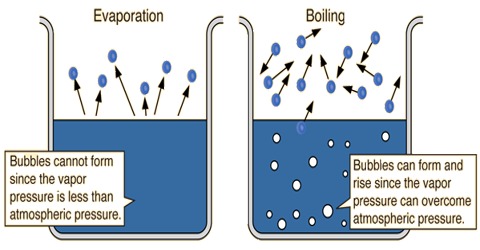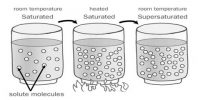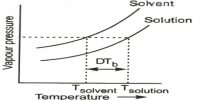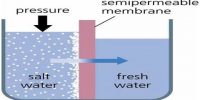Kinetic Theory of Vapour Pressure
Consider a liquid placed in a closed vessel which it fills partially, the remainder being evacuated. The molecules of the-liquid, like those of a gas, are in continual motion. There is a distribution of velocities of these molecules just as there is in a gas, the average velocity having a definite value depending on the temperature. Although in a liquid the molecules are held together by attractive forces sonic of these molecules, near the surface, may have sufficiently, high velocities to overcome the attractive forces and escape into the evacuated space above the liquid surface. Again, some of the molecules in the vapour phase, during their haphazard movements, may have low velocities and come within the sphere of influence of the attractive forces of the molecules in the liquid phase so that these will return to the liquid phase (figure). In general, as there are many more molecules per unit area of the liquid surface than there are in unit volume of vapour phase, more and more molecules will escape into the vapour phase. The pressure exerted by the molecules in the vapour phase will increase, but the number of molecules in this phase increases and there will be a greater tendency for them to return to the liquid phase.
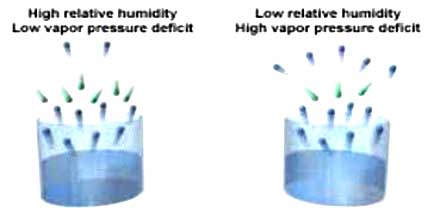
Fig: Molecules leaving the surface and returning to it
Eventually a state will be reached when the number of molecules leaving the unit area of the liquid surface in unit time is equal to the number of molecules returning to it from the vapour in the same time. This is the state of dynamic equilibrium and the pressure exerted by the vapour under such condition is the saturation vapour pressure at the given temperature. Since the number of molecules that can escape from the liquid surface in a given time is proportional to the area of the free surface of the liquid and since the number that returns to the liquid phase is also proportional to the area of this surface, the vapour pressure will be independent of the relative amounts of the liquid and vapour. Only the fraction of the molecules which have high velocity can escape and this fraction increases with increase of temperature. Vapour pressure may also be regarded as a measure of escaping tendency of the liquid molecules. The higher the escaping tendency the higher is the vapour pressure.
t is significant to note that liquids with a low vapour pressure have relatively large values of the van der Waals constant “α”.
